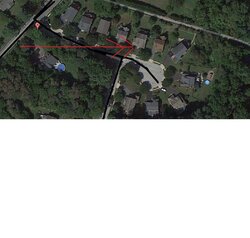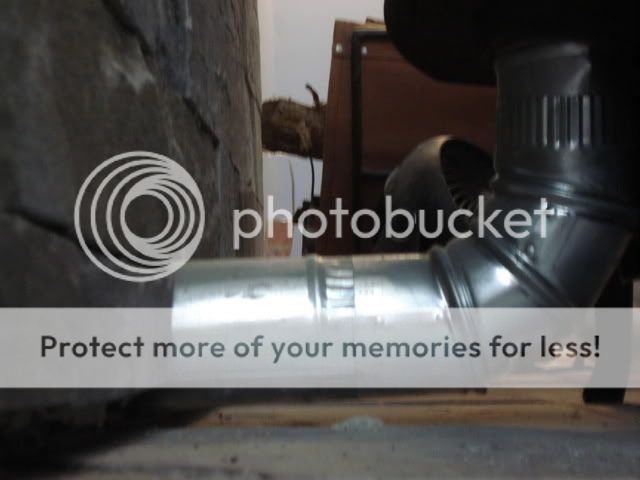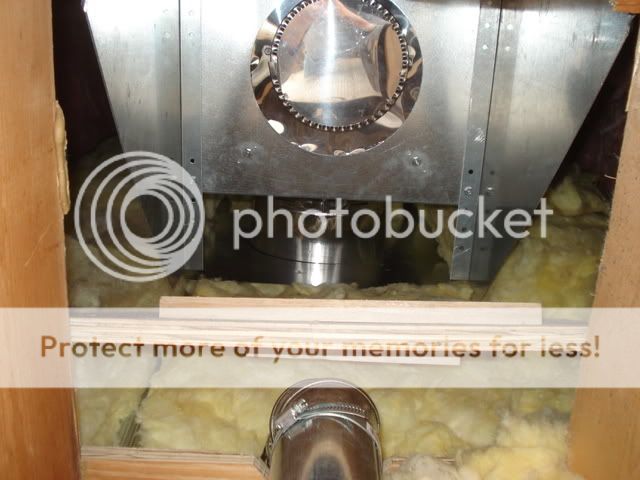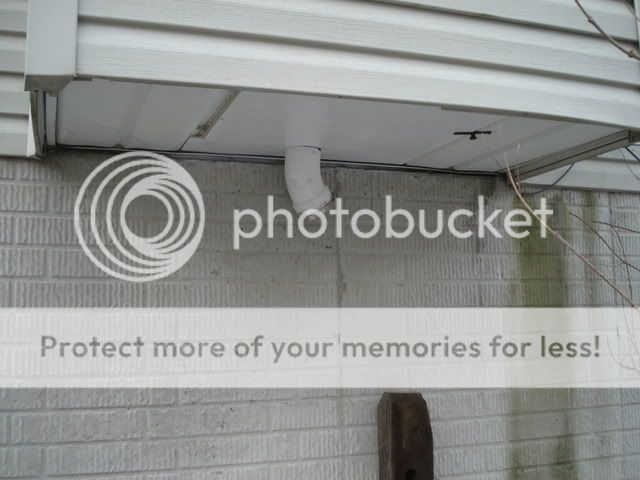I installed my stove back in 2009 and have been pretty happy with its performance. Just to get it out of the way- the wood I’m using is a mix of poplar and red oak CSS in 2010.
I’m running a jotul 400 rear vented into a prefab chase using a Class A system. The chimney run is roughly 21’ in total, but draft is impacted somewhat by a 30 degree offset which begins maybe 4’ above the stove. The first time I ran the stove it was a smoky mess! Shortly after the match hit the kindling smoke was bellowing out of the intake. This problem went away after installing an outside air kit. I’ve tried running the stove with using inside air a couple times since and had similar results…. Extremely sluggish starts or smoke out the air inlet. As I mentioned above, I’ve been pretty happy with performance, though, I still feel like I’m not getting enough airflow. It can take an hour or more to get the stovetop up to 500. I went as far as to buy an inexpensive endoscope and run it through the stove to make sure there are not blockages!
What’s been really frustrating is that periodically I get these fantastic burns….quick starts strong secondaries, ect. I noticed last week that during one of these good burns the winds were coming from the east, which is the side the chimney and OAK are on. I’m wondering now if negative pressure on the east side of the house (our prevailing winds are from the west) is impacting the stove’s performance. There are no windows on the west side of the house. I guess my options are:
• Remove the OAK and crack open a window on the north wall in the stove room
• Reroute the OAK to either the north (much shorter run) or south wall
• Accept the fact that inconsistent burns are the norm for woodstoves
Anyone have an issue similar to this? Will running the OAK all the way to the windward side really make a difference?

I’m running a jotul 400 rear vented into a prefab chase using a Class A system. The chimney run is roughly 21’ in total, but draft is impacted somewhat by a 30 degree offset which begins maybe 4’ above the stove. The first time I ran the stove it was a smoky mess! Shortly after the match hit the kindling smoke was bellowing out of the intake. This problem went away after installing an outside air kit. I’ve tried running the stove with using inside air a couple times since and had similar results…. Extremely sluggish starts or smoke out the air inlet. As I mentioned above, I’ve been pretty happy with performance, though, I still feel like I’m not getting enough airflow. It can take an hour or more to get the stovetop up to 500. I went as far as to buy an inexpensive endoscope and run it through the stove to make sure there are not blockages!
What’s been really frustrating is that periodically I get these fantastic burns….quick starts strong secondaries, ect. I noticed last week that during one of these good burns the winds were coming from the east, which is the side the chimney and OAK are on. I’m wondering now if negative pressure on the east side of the house (our prevailing winds are from the west) is impacting the stove’s performance. There are no windows on the west side of the house. I guess my options are:
• Remove the OAK and crack open a window on the north wall in the stove room
• Reroute the OAK to either the north (much shorter run) or south wall
• Accept the fact that inconsistent burns are the norm for woodstoves
Anyone have an issue similar to this? Will running the OAK all the way to the windward side really make a difference?

Last edited by a moderator:




